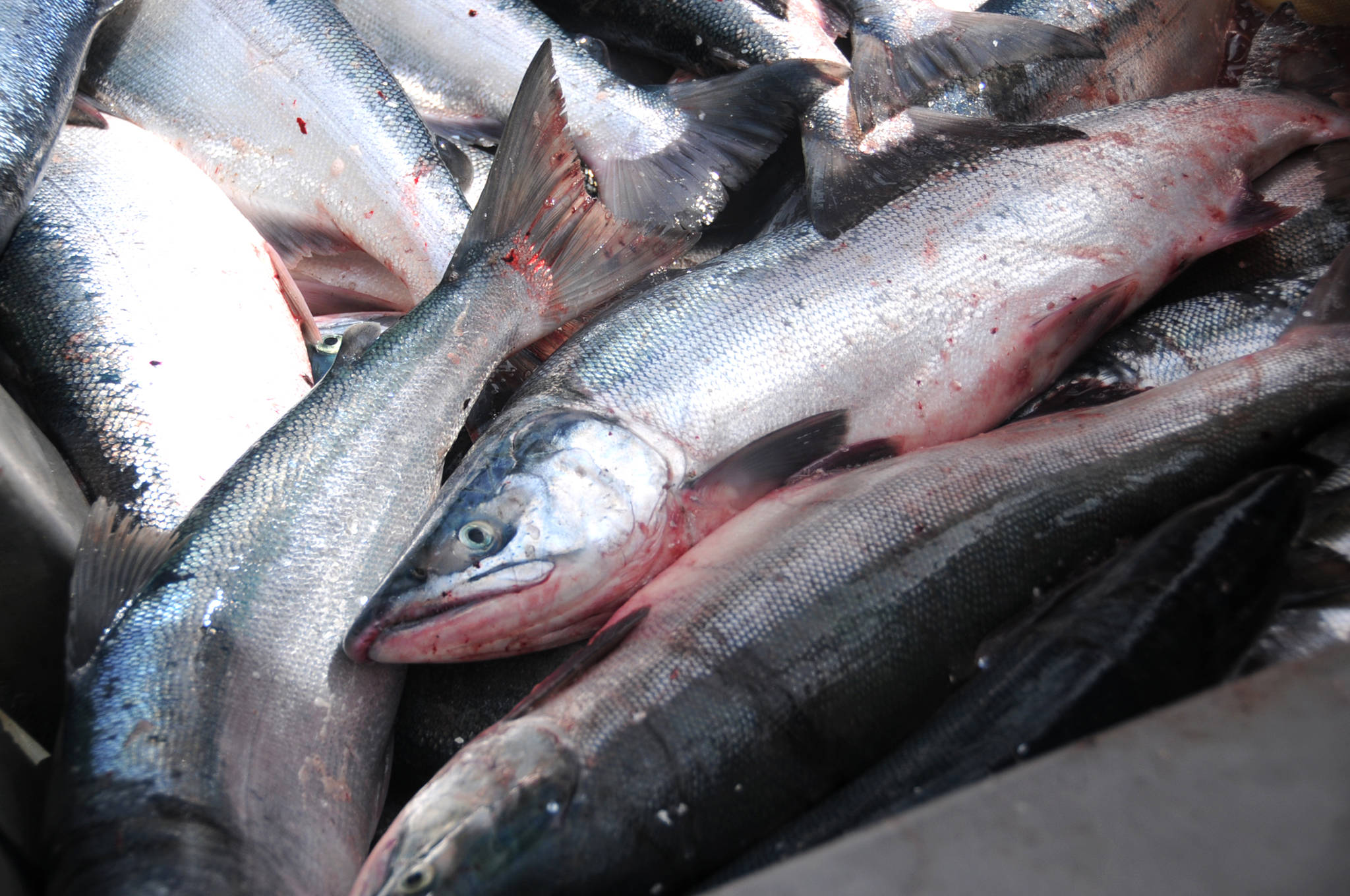The fisheries group established to try to defuse some of Cook Inlet’s salmon wars is off to an uncertain start.
Gov. Bill Walker issued Administrative Order 291 forming a Cook Inlet Salmon Task Force on June 4, meant to address some of the notoriously fraught salmon allocation political issues in the Cook Inlet region, the most densely populated area and heavily used fisheries in the state. However, the group had already met twice before the administrative order was issued, and at the last meeting, the group suspended meetings for the summer because of the busy fishing activities of the summer in Alaska.
A variety of people attended the initial May 9 meeting, noted as “work group members” in the notes published on Fish and Game’s website. Among them were multiple United Cook Inlet Drift Association members, commercial set gillnet fishermen, sportfishermen and representatives of the Mat-Su Borough Fish and Wildlife Commission. The 18 attendees were split up into three working groups to discuss fishery issues, according to the notes made by consulting firm Professional Growth Systems, which facilitated the meeting.
The mission statement and the membership aren’t pinned down yet, though, said Walker’s Press Secretary Austin Baird in an email.
“Formation of the task force has been postponed until after the fishing season to enable broad stakeholder participation. Exact dates have not yet been determined for meetings, and membership has not been finalized,” he said. “The task force itself will determine what observations or recommendations to make, and any suggestions will then go through more formal boards and advisory committee processes.”
That lack of certain and lack of direction already prompted one group to exit the process entirely — the Kenai River Sportfishing Association. The group took part in the task force’s two initial meetings May 9 and May 23, but decided to withdraw upon observing the disorganized format and lack of connection to the Board of Fisheries process, said Executive Director Ricky Gease.
“It was just kind of discombobulated and awkward,” he said. “While it’s great to get people together and talking, it’d be better to get people together on a specific topic.”
In the past, the Board of Fisheries or the Legislature have convened specific groups on specific topics, such as the Upper Cook Inlet King Salmon Task Force after the disastrously low returns in 2012 and before the 2014 Upper Cook Inlet regulatory meeting, Gease said. He cited the example of the information presented at the last Upper Cook Inlet Board of Fisheries meeting about the most recent scientific data regarding Cook Inlet sockeye salmon being caught by commercial fishermen in the Kodiak management area — the Board of Fisheries could convene a group to specifically discuss and come up with solutions for that issue.
Others are staying in the discussion, including the Kenai Peninsula Borough. Borough Mayor Charlie Pierce attended the second meeting, which he said he found educational on a variety of Cook Inlet fishing issues.
“It was a long day, a lot of discussion… questioning how and why the various fish managers do what they do,” he said. “I’m interested in learning and more importantly being an individual that hopefully can bring some solutions to bring the groups together, they can all agree that we believe this is really what the plan should be.”
The borough administration had been considering convening its own fishery group to help defray some of the disagreement between user groups on the peninsula, but for now, they’ll participate in the governor’s task force and leave the door open in the future for a borough-specific group, Pierce said.
He said he was disappointed that the Kenai River Sportfishing Association would not participate in the discussion, which could ultimately result in policy recommendations.
“If the task force initiative is going to work, whoever you represent, you should come to the meeting and be able to listen to the music — whether you like the sound of the music or not, you should be at the table,” he said. “Because ultimately at the end of the day, there could be some policy formulated by the policies of these discussions, and I’d hate to think that one group or any of the groups would not be represented.”
Baird said the governor’s intent for the task force was for it to be openended and facilitate conversation.
“Existing boards and advisory committees play a critical role in Alaska fish management, but the governor is attempting to bring people representing the many perspectives on fish together into the same room for conversations that are less formal and less likely to become adversarial,” he said.” That is the motivating force behind Administrative Order 291. The Governor is very pleased with the broad-based commitment from stakeholders to participate in this process.”
There are a number of other task force efforts going on in the state as well as Cook Inlet. The Alaska Humanities Forum is in the second year of its Salmon Fellows program, bringing together salmon stakeholders from around the state to discuss solutions and issues related to salmon in Alaska.
In Cook Inlet, the federal North Pacific Fishery Management Council has convened a Cook Inlet Salmon Stakeholder Group as well to discuss management strategies as the council works through rewriting the federal Fishery Management Plan for Cook Inlet salmon fisheries. The five nominees — Erik Huebsch, Dan Anderson, Dino Sutherland, Hannah Heimbuch, and Mark Casseri — were announced at the council’s June meeting in Kodiak and will not meet until a council member has been appointed to chair the committee, which will likely occur in August, according to the council’s website.
Reach Elizabeth Earl at eearl@peninsulaclarion.com.

